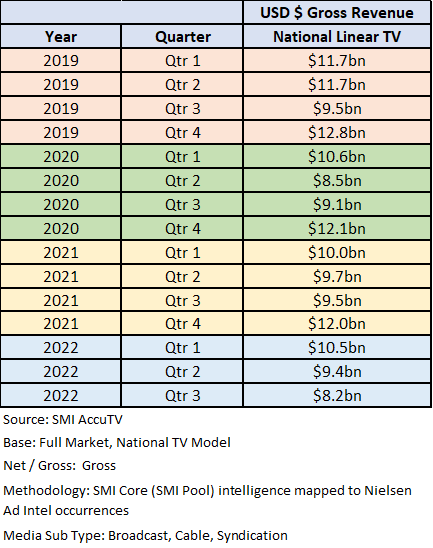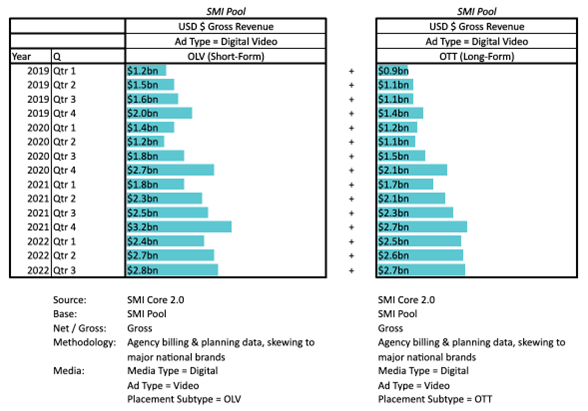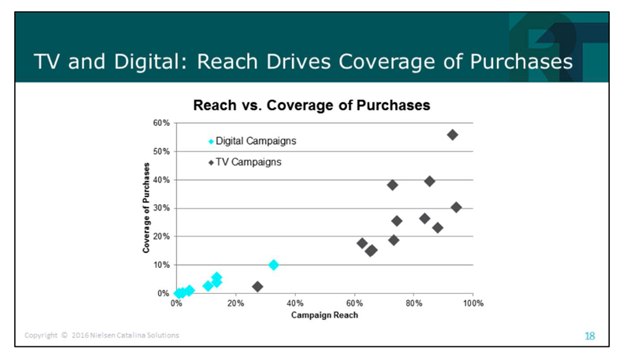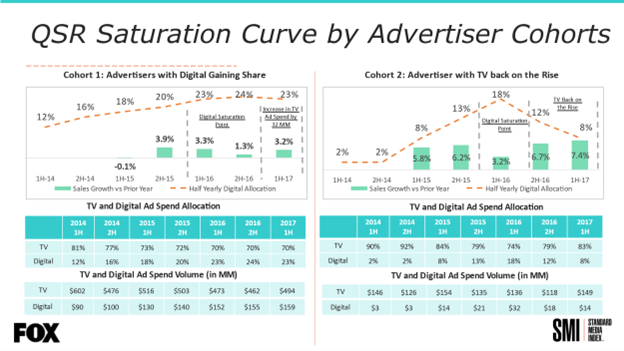Don't Cut Advertising, Transform It!

Cataclysmic changes to our way of life pelt us with new surprises daily. In this atmosphere it's understandable that marketers may feel that pulling back is the right thing to do. In the animal kingdom from which we sprang, when the turtle feels imminent attack is upon him, he pulls his head in. This could be related. Standard Media Index reports that in Q3 2022 the U.S. TV industry received $8.2 billion in advertising revenues. That's the lowest quarterly total since SMI became fully rolled out in the U.S. in 2017 -- and lower than it was in the first COVID quarters.
Q3 of 2019 was $9.5 billion, the lowest pre-pandemic quarter since 2017. That's now down about -14%.

At a global level, WARC projects that in 2023, ad spend will decrease in publishing (including digital versions), television (except OTT/AVOD), radio (except online), and digital's growth rate will be chopped in about half.
The Standard Media Index data show that both major forms of digital video are growing at about equal rates and the two types -- longform which is the television streaming networks and apps, and shortform which is YouTube and the like -- are about equal size. However, BHC Fox results show that ROAS is more than double for longform (which most people call "premium").

The industry is generally cutting the most premium environments in favor of the lowest CPM environments, thus mostly ignoring the ROAS results in favor of the more front-of-mind CPMs (as always). This is the way people like to fool themselves into oversimplifying media optimization. Ignoring the Return On Ad Spend, which is higher in television and magazines than in nonpremium digital video and far higher than in digital display. Pennywise and pound foolish.
Studies by CBS, Nielsen NCS, Innovid, TRA and others have consistently shown that it's very hard to get more than a 10%-13% reach with a digital campaign no matter how much money you spend on it. Courtesy of the Advertising Research Foundation (ARF), here's a graph presented by Dave Poltrack (CBS) and Leslie Wood (NCS) at the 2016 ARF AUDIENCExSCIENCE conference:

Here's a link to even more extensive coverage of digital reach challenges by Dave and Leslie as presented in 2017 with Advertising Age media reporter Jeanine Poggi.
Cutting television and radio, which are the reach media, is going to pile up all your impressions against a small chunk of your customers and prospective customers.
This will then show up as reductions in brand growth and even shrinkage in sales.
This graph shows what it looks like when a brand gets hooked on the idea of shifting more and more and more into low-CPM digital and out of TV and streaming. On the left are the chains that moved money out of TV into digital the most, on the right are chains that did the least of this. Over the 3.5-year period studied, brands on the left generally lost sales and never grew more than 2%, brands on the right generally grew sales by as much as 7% when digital dollars were moved back into TV. The green bars are the sales increases.

We could go on at great length but let's assume our point has been made about not cutting out premium media based on naïve assumptions.
What did we mean in the title about "transforming" advertising?
In a world of commoditization, meaningful connections matter more than ever.
Studies show that ads that compellingly dramatize the benefit of a truly superior brand are the most effective of all. However, not every brand is superior. Many top-quality brands are of equal quality. If you can't compellingly demonstrate superiority to a thoroughly cynical audience, what tactics can you use in ads that will tilt the needle on brand growth?
You can dramatize what you stand for, what values you hold dear which can never be commoditized. You can show the people who stand behind the brand are good people. You can replace normal ads with brand content that has no hidden agenda to promote the brand, but which makes a statement about the good things in people, whether they be heroes or heroines or people who do the right thing. True stories about people, known or unknown, who are inspiring role models for the rest of us in one way or another. Find the good in the human race and put that message where it has the broadest reach …TV ad pods.
Brought to you by the brand whose logo could appear at lower right throughout the ad. This is not mere signage. This is profound bonding, establishing trust, authenticity, genuine caring. We espouse the power of brands and their role in culture. This means brands have the power to serve as beacons of trust and optimism. Messages that uplift and encourage.
When this has been done in digital its ROI and brand persuasion results are more than 7X those of average 30 second TV spots. It will have even more impact and reach in television. Today while most people are living in deep concern about their lives and the future, be part of their solution. Shore up the people's confidence in themselves and their ability to be resilient and face the challenges. This is an opportunity of a lifetime for wise marketers. It may never come again.
Let's hope it doesn't. You can be part of making the future a better one. Do it now.
Click the social buttons to share this story with colleagues and friends.
The opinions expressed here are the author's views and do not necessarily represent the views of MediaVillage.com/MyersBizNet.


